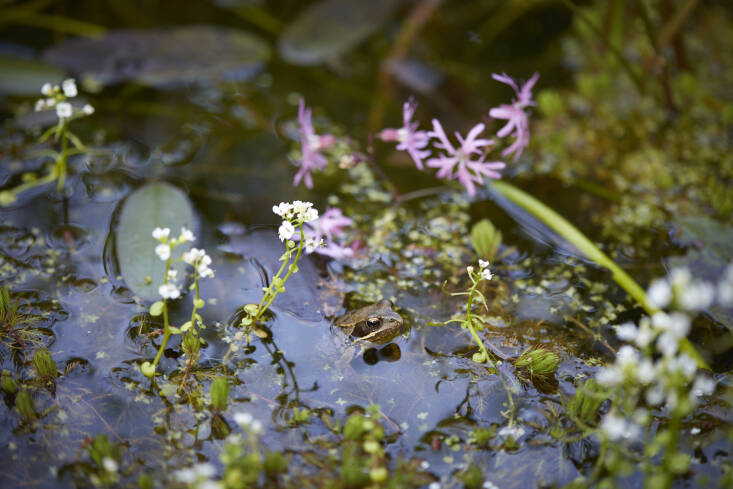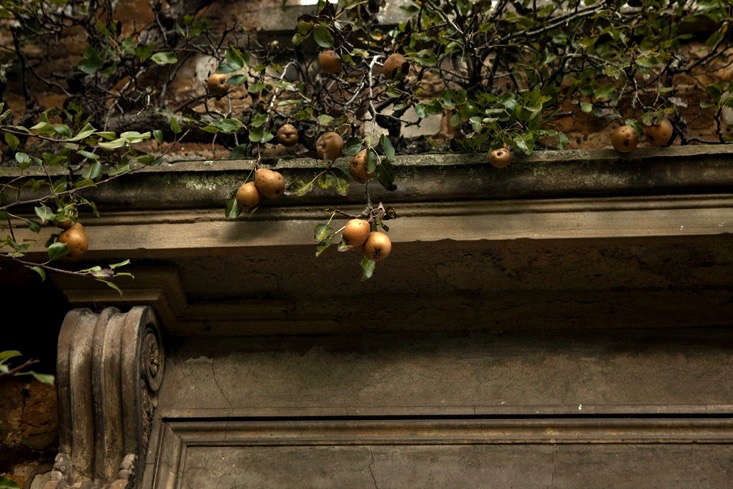Mary Reynolds is a landscape designer with a starry past. The story of her unlikely debut at the Chelsea Flower Show was made into a feature film (Dare to be Wild), but these days, she is more interested in being a guardian than a gardener. “Looking at gardens as artistic endeavors or feasts for the senses is outmoded,” she says at the beginning of her new book We Are the ARK, published this week. We need to get over ourselves, as it were, and shift our focus on to what and who we share our gardens with.
It’s a highly readable manifesto on future gardening from a great communicator (see her Instagram), in which there is hope on every page. Hard facts are balanced with enthusiasm: Start small, but get going now. If everybody gave at least half of their outdoor space back to nature, the regenerative effect on the whole space would be so much more rewarding than the conventional act of gardening. “An ARK is a restored native ecosystem—a local small, medium or large rewilding project,” she explains. “It is an Act of Restorative Kindness to the earth.” Let’s look behind some of Mary’s ideas:
N.B.: Featured photograph by Justine Hand, courtesy of Robert Hanss, Inc, from Landscape Architect Visit: A Dreamy Property in the Suburbs that ‘Invites the Meadow In’.
“The overlapping edges are where the magic happens.”

Ecotones are the places where one type of eco-system merges into another, enriched by both. An ecotone could be grassland giving way to woods, or the edges around a lake. Would you contemplate tufty grasses and weeds merging into a thorny thicket of trees and shrubs? It could take a while for cultural ideas about “messy” gardens to change but in the meantime, a wildlife pond and areas of dead wood are a step in the right direction. And beauty is a part of this: dry stone walls, mown paths through meadows and native hedging all support diversity.
When native weeds emerge on uncovered earth, they “are healing the soil and rebooting the ecosystem.”

Bare soil is not natural, and is soon covered by unplanted greenery, or if you like, weeds. Learn to love what you have been taught to hate: leave them. Rewilding areas of land is good news for ‘hands-off’ gardeners. However, it is important that there is a native seed bank waiting in the soil from which compatible plants will emerge: invasive plants that have not evolved with their neighbors over millennia can be destroyers of ecosystems. Thorns and brambles, by the way, are perfect for protecting emerging trees.
“Gardens now typically use ten times more chemicals by volume per acre than industrially farmed agricultural land.”

Why is gardening such an uphill struggle, people ask all the time; how come when one thing seems to be fixed, another thing goes wrong? Stop fighting, this book suggests. Forget the props: nature has its own way of finding a balance, if we will allow it, and one way of seeing this happen is by turning over half of your garden into an ARK. Consider using the other half for growing food, and moving away from industrialized systems.
“Neatness in nature equals barrenness (or something closely resembling it).”

“People love their perfect outdoor carpets, don’t they?” notes Mary. The lawn conversation has been going on for some time, and the idea of longer grass, even just for ‘No Mow May’ is beginning to gain ground at last. Lawns have historically moved from status symbols to the ground zero of respectability; it’s important to ask if this is really for you.
“The collapse of wildlife populations can be attributed (in part) to the islandization of wild habitats.”

Disproportionately large lawns are one symptom of the human desire for control, which separates animal habitats. Mary’s fervent hope is for a global patchwork quilt of connected, thriving ecosystems. Closer to home, enabling movement between gardens is hugely important. With too much hardscaping, fences and mortared walls, “creatures are cut off from sources of food, sanctuary and suitable mates.” Part of the aim of ARK-ing is to open communication between people as well as between humans and other animals. So there should be nothing wrong with talking to neighbors and asking them to agree to small openings in their perimeters.
“The more diversity that is present, the stronger the ecosystem.”

Removing animals that don’t please us is like dissolving strands from a spider’s web. Current ideas in rewilding circles suggest that we should be reintroducing predators (wolves anyone?) in order to keep the grazers moving—giving tree saplings a chance at survival. Over-hunted beavers are making a comeback; we could never be so good at creating wetland habitats. Mary explained to me: “Our job is to keep as diverse a system as possible (in whatever spaces we have in mind) by carrying out the activities of those missing threads of the web of life, that we have broken in our islandization of land.”

For sound advice on the nitty gritty, Mary is the source. When you see your outdoor space in terms of the web of life, you might start to grow everything in a different way. Seeds will be waiting in the ground, or dropped by animals. Tree seeds can be foraged from self-sown trees in local hedgerows, wasteland and woods. Growing a “Forest in a Box” is a way of mimicking nature, swapping sterilized loam for local leaf litter, and keeping it damp and sheltered.
For more on the topic, see:
- Ask the Expert: Regenerative Organic Gardener Emily Murphy on How to Rewild Your Landscape
- Landscape on a Budget: 13 Ideas for Mown Grass Paths
- Ask the Expert: 5 Tips for a Sustainable Garden from Landscape Architect Marian Boswall









Have a Question or Comment About This Post?
Join the conversation